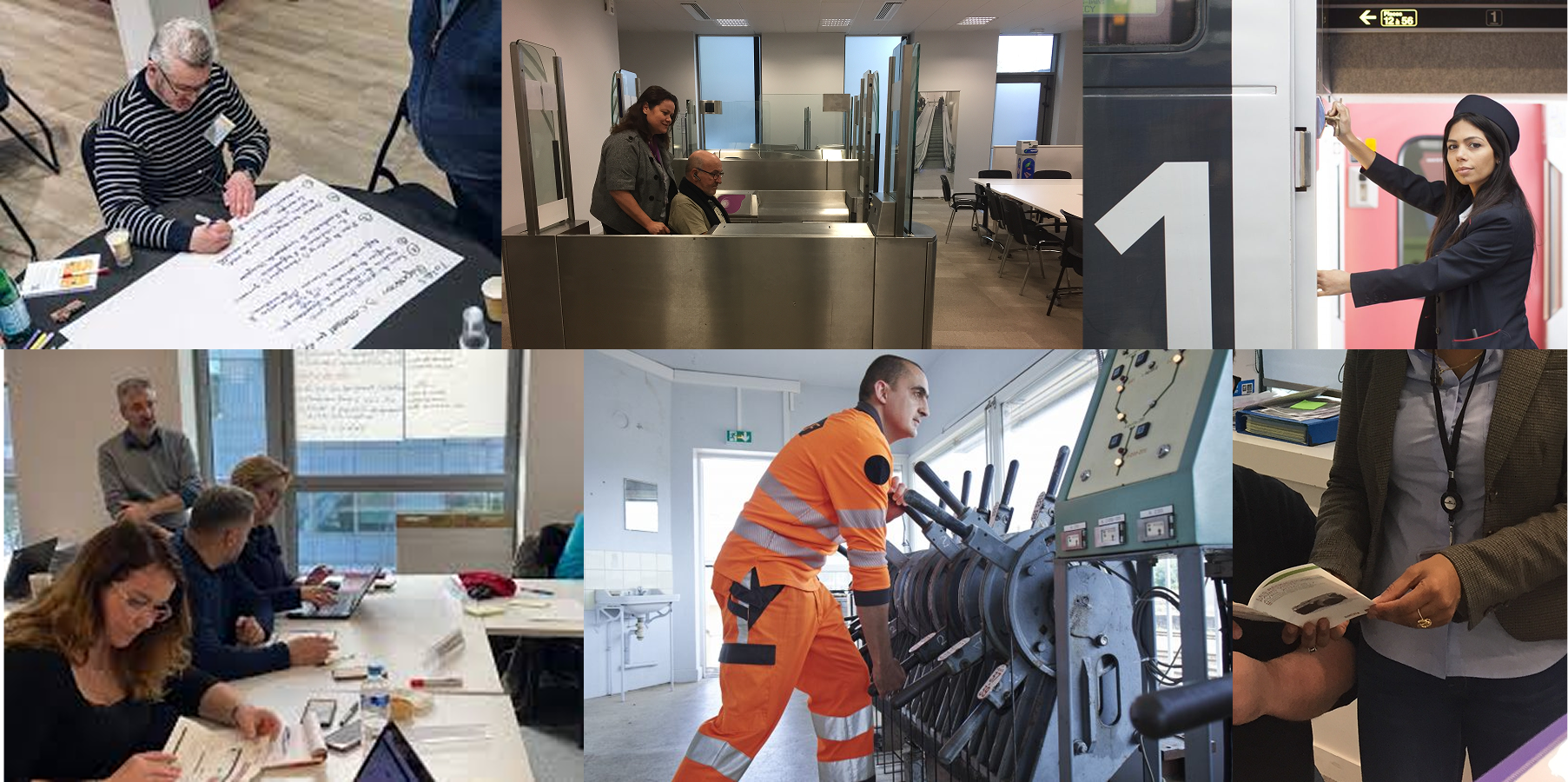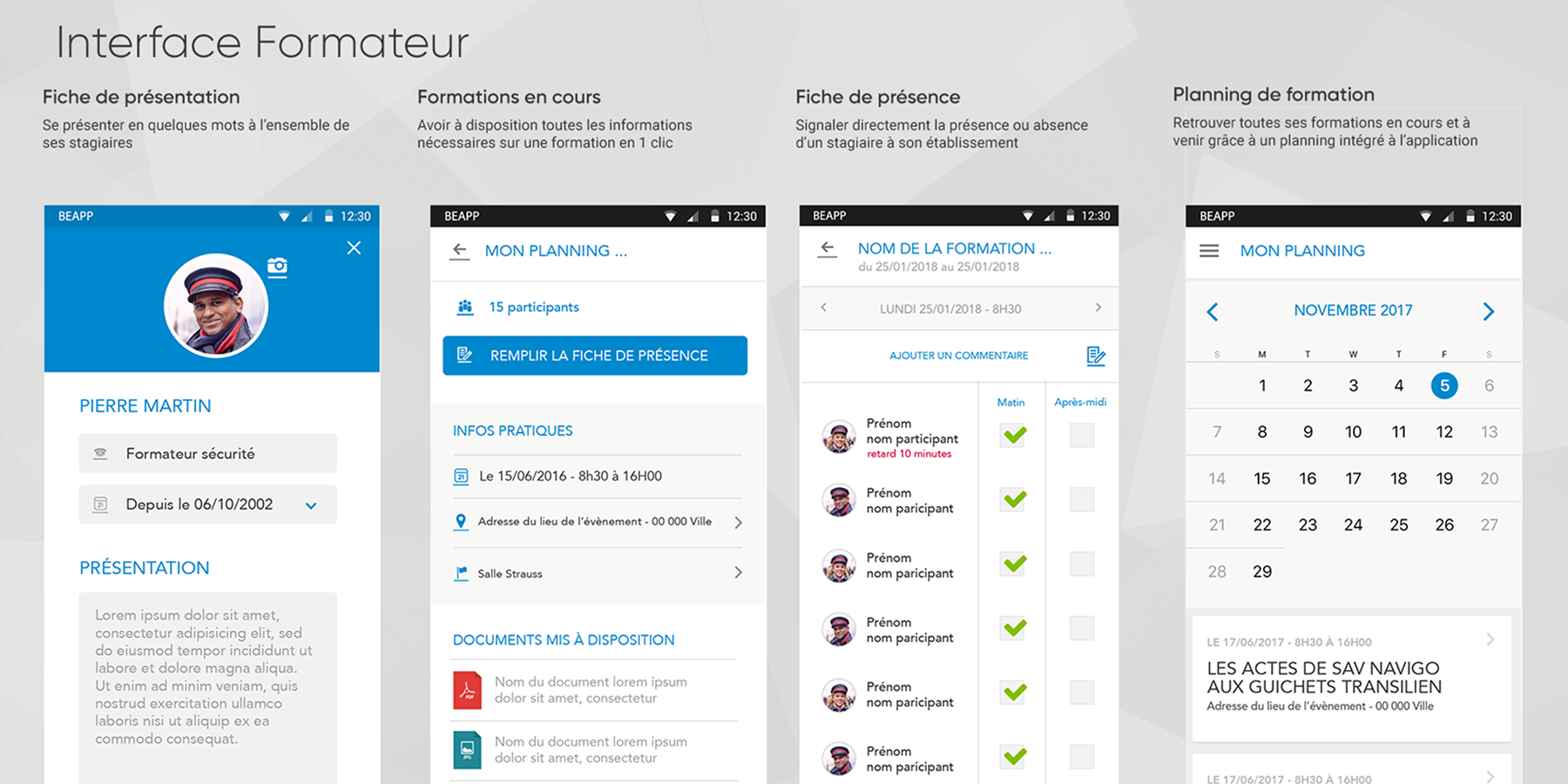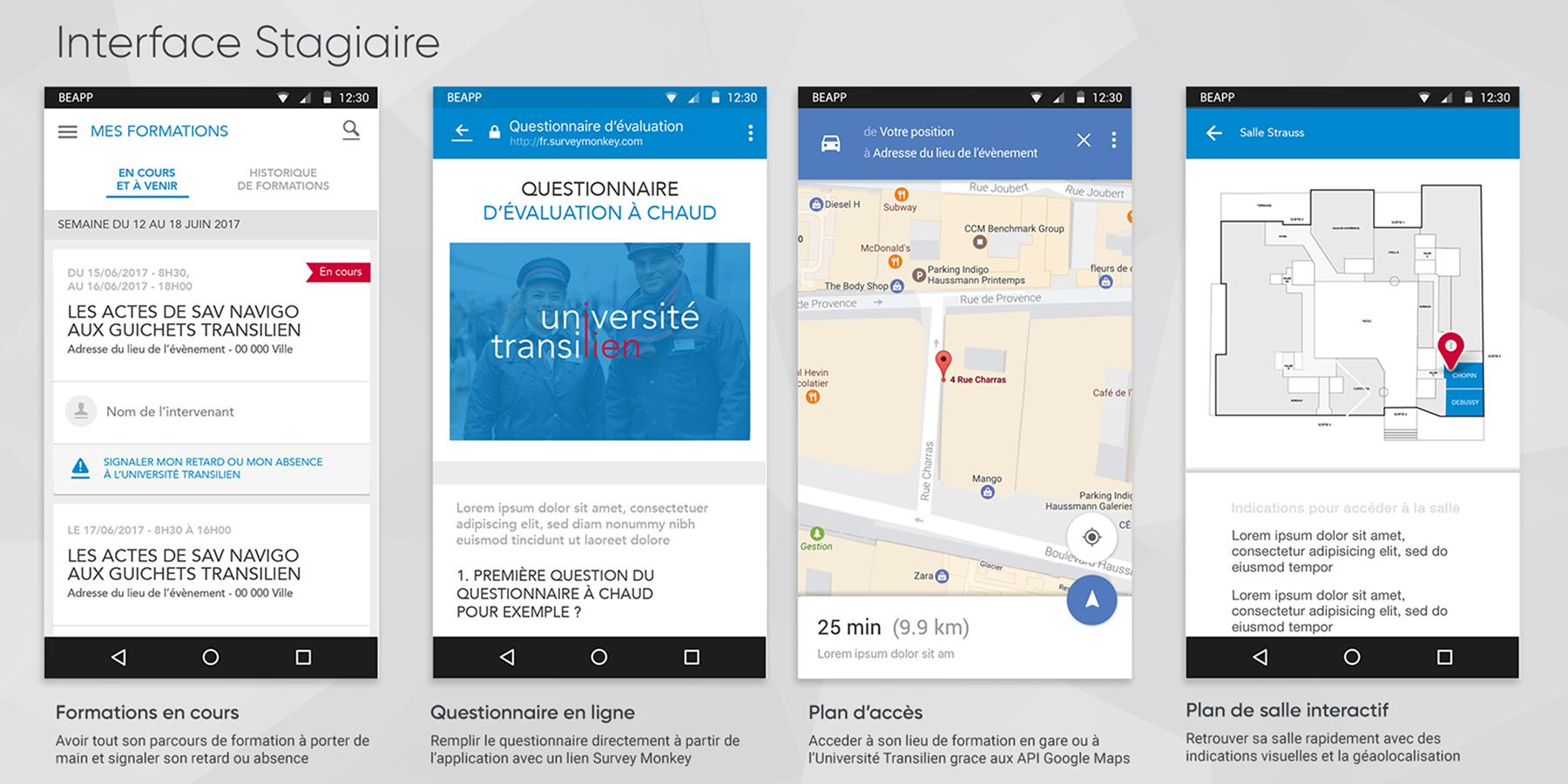The mobile app that change how 4,000 SNCF agents navigate their training journey
The mobile app that change how 4,000 SNCF agents navigate their training journey
- 30 May 2025
- ⋅
- 3 min read
When Analog Habits Block Digital Progress
We started with deep user research—no assumptions, no shortcuts.
SNCF, France’s national railway company, had invested in advanced training tools—from augmented reality to simulation modules—at its Transilien University. But behind this innovation was a painfully outdated experience : printed schedules, emailed documents, and zero digital continuity between agents and their home stations.
This disconnect created a simple but costly question : how could SNCF modernize the training experience, not just the content?
We were brought in to design a mobile-first, UX-driven solution that would enhance learning outcomes, simplify logistics, and reconnect agents to the ecosystem they operate in daily.
Phase 1 : Let Real Users Guide the Redesign

Focus groups revealed two key personas:
- The New Agent : young, digital-native, flooded with information.
- The Experienced Manager : technology-hesitant but highly operational.
Survey (50 agents) confirmed three universal needs:
- Fast access to schedules, maps, materials.
- No digital clutter – just clarity.
- Easy communication with peers and instructors.
Quick Takeaway :
Involve your end users from day one. Personas grounded in reality let you build experiences that people actually use.
Phase 2 : Design for the Entire Journey, Not Just One Screen
Our UX Strategy :
We didn’t just make a nice-looking app, we designed an end-to-end training experience.
- Before the course : prep materials and schedules delivered early.
- During : live campus maps, progress trackers, instructor chats.
- After : post-course resources, new training suggestions, and alumni networks.
Start by walking the journey your users take today. You’ll find friction you didn’t know existed—and opportunity you can’t afford to ignore.
Key UX Features
- Omnichannel continuity — No dead ends. The experience traveled with the agent.
- Information hierarchy — Everything needed in one place, no clutter.
- Community tools — Profiles and chats fostered collaboration.
- Gamification — Progress badges nudged further engagement.
- Offline-first — Designed to work even when signal dropped.
Quick Takeaway :
Great UX is not UI polish – it’s orchestration. You win when each touchpoint feels like part of the same intelligent system.


A training experience redesigned: simplified navigation, real-time updates, and interactive campus tools—all in one place
Phase 3 : Build for Your Constraints, Not Your Ideals
We worked within SNCF’s technical framework :
- SNCF-issued Android devices only
- Integration with internal training systems
- Offline mode essential for rural stations
Engineering Principles :
- Smart deployment via the SNCF Store
- Real-time data sync with internal systems
- Reliable offline caching
- Agile rollout with quick feedback loops
Quick Takeaway :
Constraints are not blockers – they’re design parameters. Build trust by respecting the environment your users already live in.
The Results After 3 Months
Quick Takeaway :
Experience drives behavior. Design something that reduces effort and adds value—and people will keep coming back.
4 Lessons UX practitioners Should Apply Today
Don’t Just Digitize. Rethink the Experience with :
- Co-Creation Fuels Adoption
Involving users in testing and design turned skeptical agents into product ambassadors. - Reliability Beats Surface-level polish
Offline access and integration mattered more than trendy features. - Information Simplicity Wins
We reduced cognitive load, not added to it ; a huge factor in high-stress environments. - Segmented Onboarding Matters
Tech-savvy and traditional users need different ramps onto the same tool.


